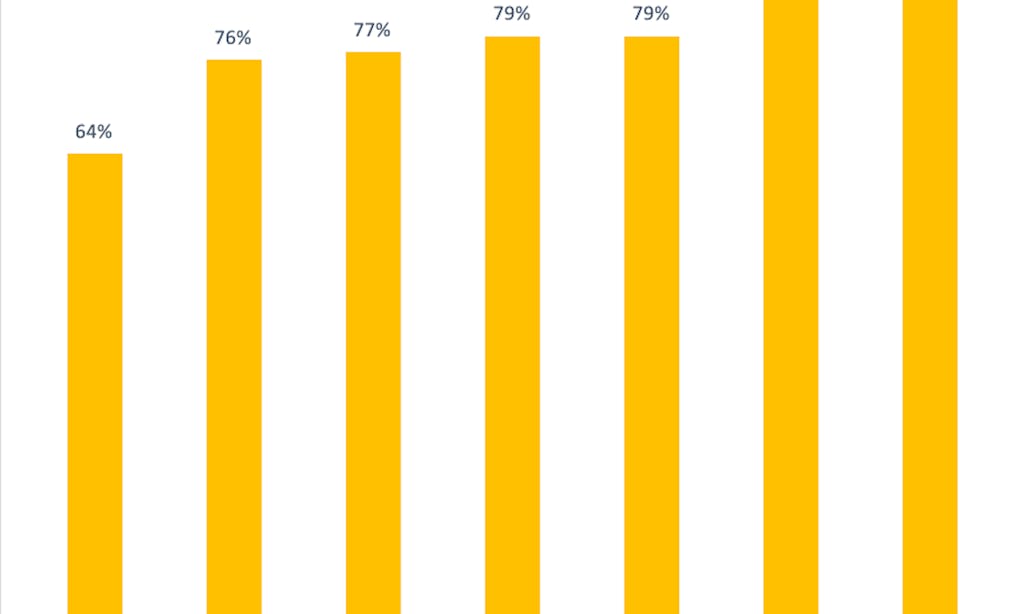Elevating Diverse Media Takes an Industry

Perspectives
By Kim Dunn
2022 March 9
Late last year, members of the Association of National Advertisers (ANA) announced that diversity was the 2021 marketing word of the year. This acknowledged what the industry’s primary focus would be in 2022 and the incredible power the industry has in how diverse communities thrive and see themselves. But we’ve also learned that the industry has failed to wield that power to enact meaningful change.
It’s no surprise that the dominant theme at last week’s 2022 ANA Media Conference was diversity in media planning and buying. The conference provided compelling takeaways about why we need to embrace diversity, what barriers exist in achieving our goals and a clear path for change.
The why is easy
It’s where the money is going. Diverse audiences are gaining share of economic clout quickly, projected to make up over 20% of U.S. buying power by 2025. All segments are showing a higher rate of growth than white consumers.

While mass media reaches across diverse segments, research continuously shows that placing media in culturally relevant environments with customized, appropriate messaging delivers stronger business results. Google and Ipsos’s Inclusive Marketing Study shows that across segments consumers are more likely to act after seeing an ad they considered to be diverse or inclusive. General Motors shared with conference attendees that investing in diverse media paired with customized messaging drives business results, stating that their efforts have garnered significant lifts in purchase intent, sales and purchase frequency from the targeted groups.

Despite the business case, spend in diverse-dedicated and diverse-owned media continues to lag woefully behind. For example, Nielsen reports less than 2% of U.S. ad dollars are spent on Black-owned media though they make up 13% of the U.S. population.
This contradiction was brought to the floor in nearly every Q&A session of the conference. Even though C-suite representatives talked about change, the diverse-owned and diverse-dedicated media partners in attendance are struggling to see the change in their media plans.
What are the barriers?
While the efforts and results of General Motors, McDonald’s, P&G and many other marketers are impressive, the diverse-owned media companies in attendance raised the number-one barrier that they experience: even within these progressive companies, the boots-on-the-ground media planners and buyers aren’t in on the mission. This lack of education throughout the ranks is evident in several areas of the media planning and buying process:
1) The generic, CPM-based RFP
Every partner should have the same RFP process and be judged on the same criteria, right? Just pick the partners who give us the highest on-target delivery at the lowest cost. Here’s the rub: In most cases, a diverse-dedicated or diverse-owned media partner will not be able to compete head-to-head on reach and efficiency. In the numbers game, we can get higher reach against a Black audience by buying A&E or Lifetime than by buying TV One. This creates a damaging cycle.
2) Daunting tech requirements
The set-up and investment required to integrate easily with ad tech platforms can be prohibitive to an emerging business. Media planners and buyers looking for ease of trafficking will shy away from partners who can’t accommodate third-party ad-server tags, ad verification or brand-tracking studies. At the conference, the Black Owned Media Equity and Sustainability Institute discussed this challenge and their partnership with mobile tech partner Kargo to help emerging Black-owned businesses get access to and training on these platforms to help overcome this barrier.
3) 90 to 180-day payment terms
Ninety-day-plus payment terms are a near-impossible barrier for a new business, where cash flow is critical. Even if a diverse-owned media partner manages to jump all other hurdles and make the media plan, getting hit with contract terms that won’t have them seeing any payment for three to six months can make the deal impossible to accept. That’s if they can get a meeting in the first place.
As part of our diversity, equity and inclusion (DEI) commitments, we must look across our processes to help meet diverse companies where they are now. If we sit back and wait for them to catch up to the big players, they simply will never be able to. Here’s how the industry can do better:
1) Make the commitment
Changing how we plan and spend won’t happen without intentionality. We need to set clear goals and plan to meet them. We are stewards of our clients’ money, so that means partnering on what those right goals and steps are and seeing the business case for this change. This commitment also includes:
- Re-examining audience research to reflect the unique attitudes, behaviors and media habits of diverse segments of the target audience
- Content planning for diverse media with customized messaging for the context
- Scrutinizing brand safety technology and settings to ensure diverse and diverse-relevant content isn’t inadvertently being over-filtered
2) Flex the processes
A commitment to investing in the growth of diverse-owned media also requires a commitment to reduce the friction in cash flow so they can achieve that growth. This means customization of media processes, from RFI to trafficking to billing to measurement. This includes planning for a faster 30-day turnaround on vendor payments, committing to non-cancelable media, adjusting evaluation criteria and potentially accommodating more manual trafficking and measurement steps.
3) Go to school
This change needs to be communicated, understood and adopted across the team, from directors to interns, by:
- Bringing in diverse-owned media partners to get cross-disciplined teams up to date on capabilities in addition to workshopping evaluation criteria, improved RFPs to lead to better ideas and creative best practices
- Teaching teams and clients alike how to plan for diverse media and develop an appropriate measurement approach to understand the impact
- Being accountable by sharing your efforts and results. Publish an annual progress report on your DEI initiatives that includes diverse media milestones
4) Keep the end goal in mind
Ad dollars can make the difference between a community being seen or being silenced. As an industry, we have the power to drive meaningful change for generations to come. We can’t be afraid to use it.
Related Articles
-
Perspectives
Lessons from Netflix on the Art of Representing a Culture
Read More